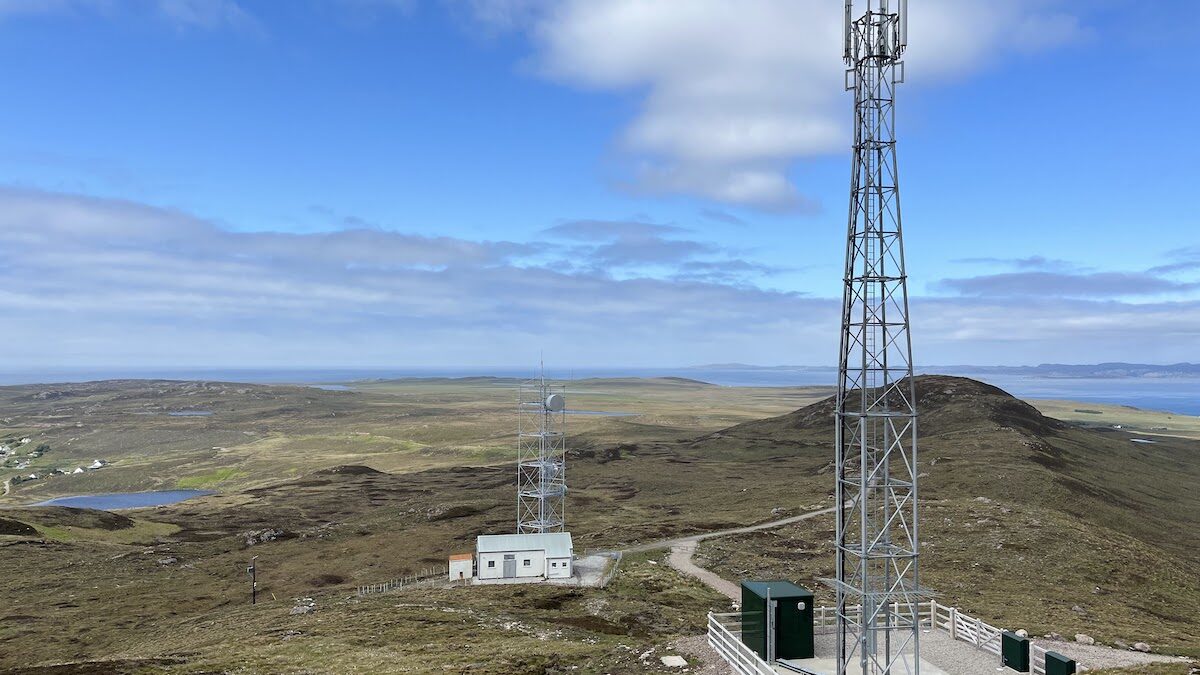Residents in a remote and mountainous part of Scotland can finally access 4G mobile connectivity after the installation of a local mast.
People who live in Achiltibuie in the Scottish Highlands are reporting “vastly improved” services after the vital digital infrastructure was put in place.
Technology consultancy Farrpoint has published a new study which show how 4G can not only improve the quality of life for communities, but also reduce environmental impact.
In the report, the consultancy outlined the results of an impact study conducted in relation to the installation of a the mast for the Achiltibuie community on the west coast of Scotland.
This was part of Scotland’s 4G Infill Programme, a Scottish Government investment of £28.75m to deliver 4G in mobile “notspots”.
Before the mast was installed at Polbain, 77% of residents rated their phone service as poor/very poor with a further 15% saying that coverage was fair but disclosed that they often needed to stand in a specific part of their garden or drive to a nearby layby to receive mobile signal. Only 8% of respondents rated their mobile signal as good at the time.
Julia Campbell, a local resident and development officer with the local community development company, said: “For many years, a lack of signal and difficulties with connectivity has not only been inconvenient but also created safety issues. Between us and Ullapool is 15 miles of single-track road through remote and mountainous terrain which, until recently, was a mobile black spot.
“If you had an accident or problem there you couldn’t call for help. I have rescued several tourists over the years, marooned by a puncture and faced with the prospect of walking miles to find a signal. Even at home, the phone signal was poor. I have missed various important calls from the GP and the bank, only to receive voice messages 24 hours after they originally called.”
Following the installation of the mast, another survey was conducted revealing that 65% of the community now rated their mobile signal as good or satisfactory. Those who reported poor signal dropped to 35% of the community.
Julia added: “The new mast has made a massive difference. Living in a remote area it’s vital that we can reach the rest of the world via our phones. I’m using mine a lot more now – staying in touch and not feeling as isolated as I did before.”
In addition to understanding the mobile service improvements in the community, FarrPoint also looked at the return on investment from the installation of the mobile mast. This showed that the financial breakeven point (i.e., the point at which the value of the benefits of the mast equals the cost) occurs in year 15 (in line with government expectations) meaning that the investment in rural mobile connectivity can be both positive for communities and economically viable.
The report also highlights that the environmental breakeven point (i.e., the point at which the emissions saved due to the mast outweigh the carbon cost of its installation) occurs by the end of year 6.
Dr Andrew Muir, chief executive at FarrPoint, said: “Digital connectivity is often prioritised for those living and working in urban areas. However, having access to a mobile signal is just as important if not more so for those living in rural communities. The Scottish Government’s Scotland 4G Infill Programme has been central to improving mobile connectivity across the country and our study highlights both the increased quality of life that comes from the installation of mobile 4G masts, and the economic and environmental benefits.
“While the report centres around the impact of just one mast in the west of Scotland, its findings are wider reaching. For public bodies with population in rural areas, I hope that the findings we have outlined can support them in making mobile coverage improvements. We have seen firsthand how this local community has benefitted from this investment, and look forward to seeing these benefits being delivered to other mobile blackspots through similar investments.”




